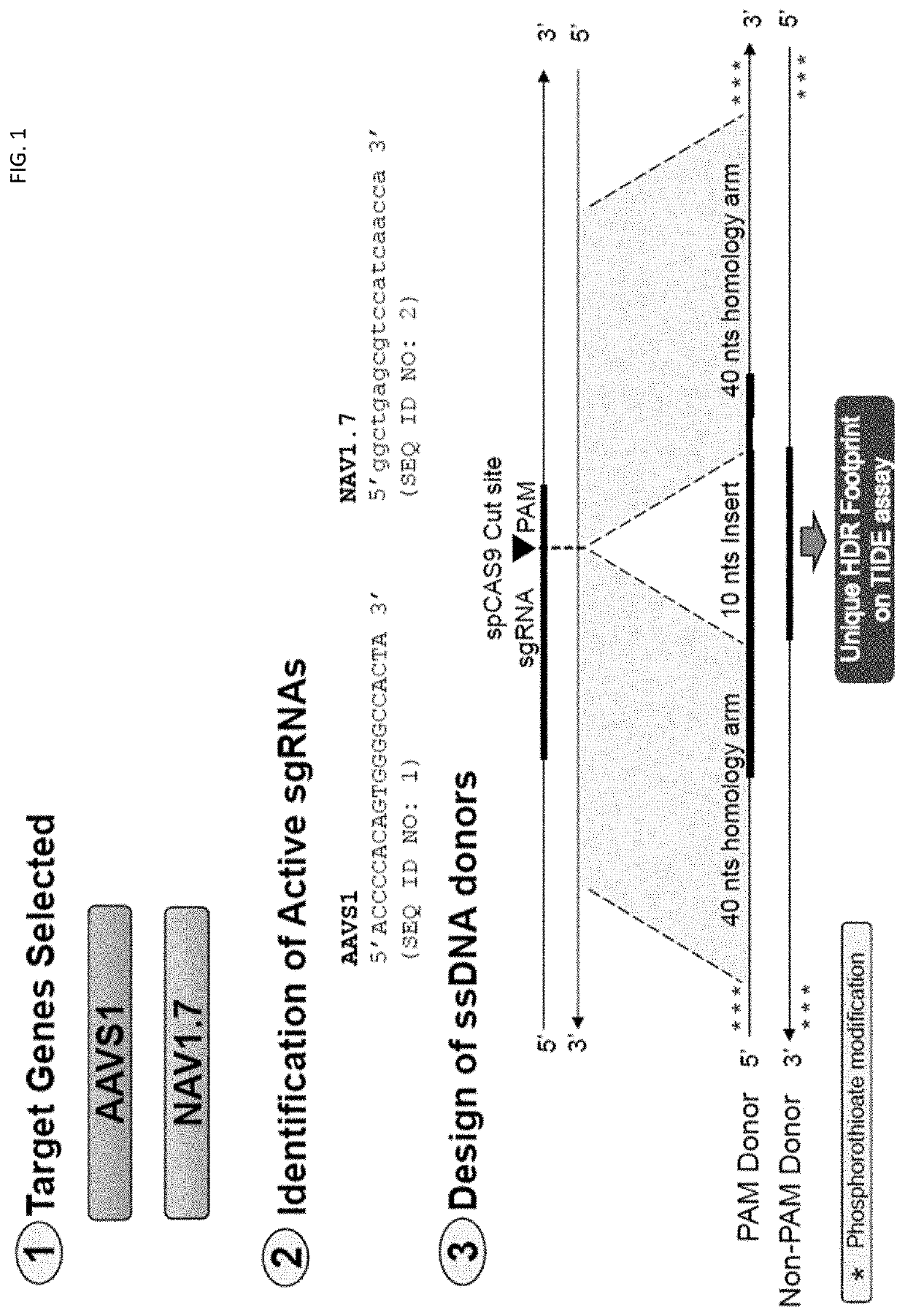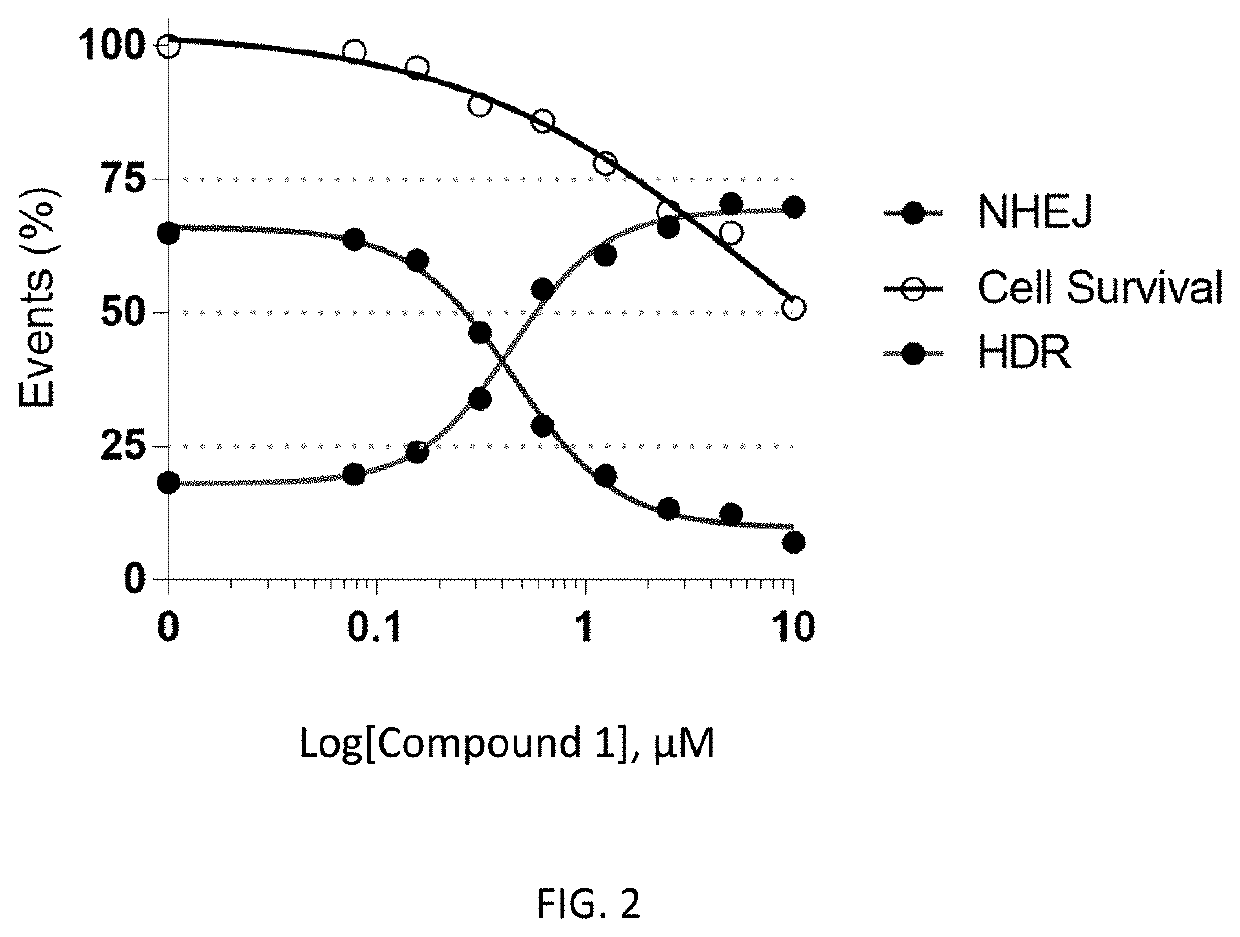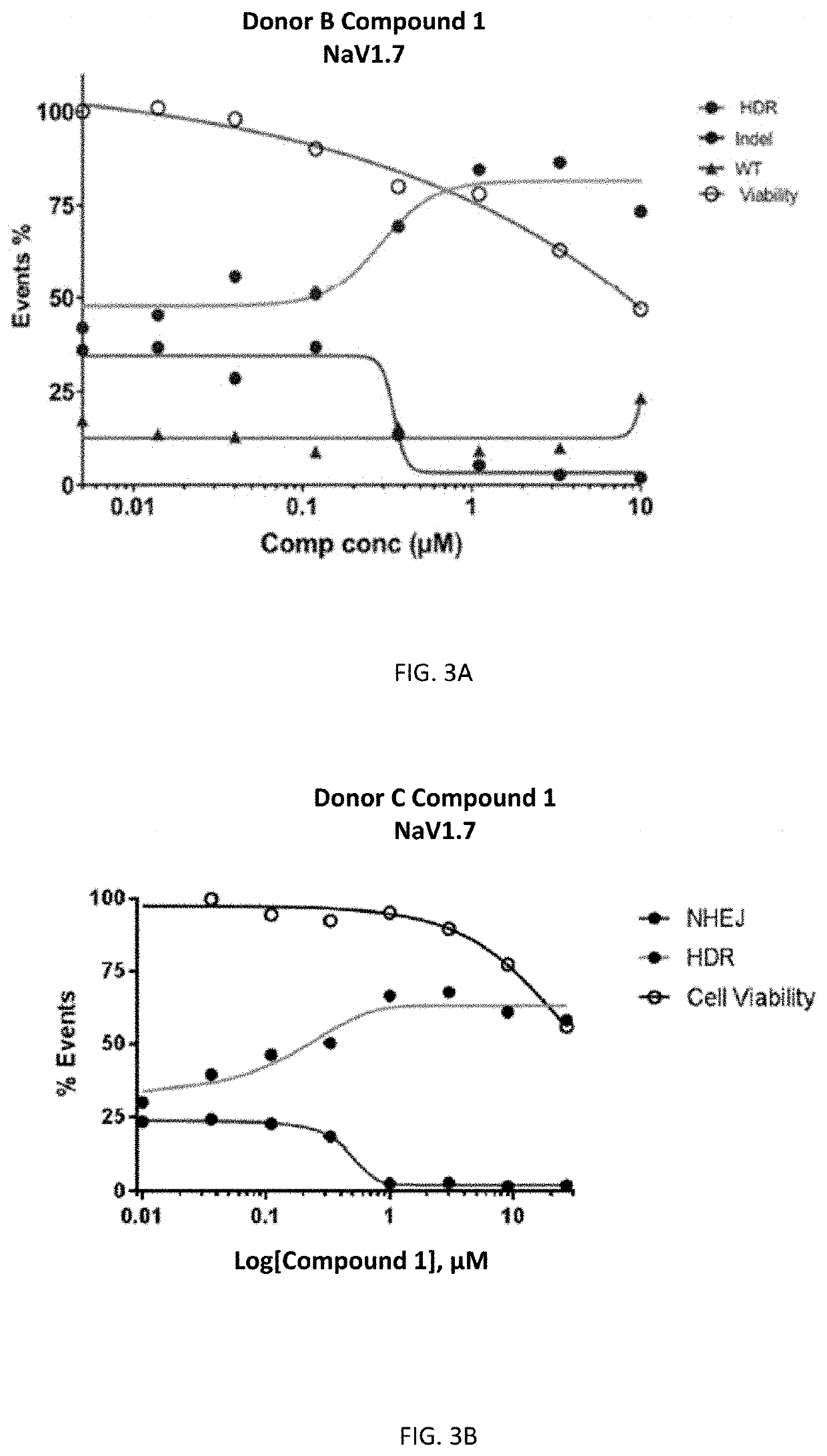Quinoxalinone compounds, compositions, methods, and kits for increasing genome editing efficiency
a technology of quinoxalinone and compound, applied in the field of compound, composition, method and kit for increasing the efficiency of genome editing, can solve the problems of difficult hdr efficiency and rate less than 1%, and achieve the effect of improving hdr efficiency
- Summary
- Abstract
- Description
- Claims
- Application Information
AI Technical Summary
Benefits of technology
Problems solved by technology
Method used
Image
Examples
example 1
and Methods
[0533]Methods:
[0534]Cells and Culture
[0535]Bronchial Epithelial Cells (BECs) were derived from human donors diagnosed with Cystic Fibrosis with a CFTR dF508 / dF508 genotype.
[0536]Induced Pluripotent Stem Cells (iPSCs) were derived from Human dermal fibroblasts after viral transduction with Yamanaka's reprogramming factors, Oct4, Sox2, KLF4 and c-Myc. Derived iPSCs were able to differentiate into 3 germ layers and contained a normal karyotype with 23 pairs of Chromosomes.
[0537]Primary human mobilized peripheral blood (mPB) CD34+ hematopoietic stem and progenitor cells (HSPCs) were purchased from Hemacare or AllCells. Cells were thawed, washed and resuspended in complete medium comprised of serum free medium CellGro SCGM (CellGenix) and supplemented with cytokine mix (300 ng / mL SCF, 300 ng / mL Flt3L, 100 ng / mL TPO, 60 ng / ml IL-3) at a density of 1-3×105 cells per mL and incubated at 37° C. / 5% CO2 incubator for 48 hours prior to electroporation.
[0538]DNA-PK Inhibitors:
[0539]Th...
example 2
hibitors Improve HDR Gene Editing Rates in BECs
[0556]FIG. 1 illustrates the design of the gene editing assays used in the examples below. To investigate the effect of DNA-PK inhibitors on HDR gene editing rates, BECs were electroporated with spCAS9 mRNA, NAV1.7 sgRNA and NAV1.7 Non-PAM ssODN and then incubated with different concentrations Compound 1 or left untreated (Control). Gene editing rates were determined by using TIDE assay 72 hs after electroporation. Gene editing rates were expressed in percentages and classified as HDR and NHEJ. Cell survival rates are shown in percentages where control cells were set as 100%.
[0557]As shown in FIG. 2, the DNA-PK inhibitor of Compound 1 improves gene editing rates in BECs. For Compound 1, the NHEJ IC50 was 0.4450 μM, the HDR EC50 was 0.4448 μM and the HDR TOP % was 69.37.
example 3
hibitors Improve HDR Gene Editing Rates in CD34+ Cells
[0558]To investigate the effect of DNA-PK inhibitors on HDR gene editing rates, mPB CD34+ cells were electroporated with RNP (spCAS9 protein+NAV1.7 sgRNA) and NAV1.7 Non-PAM ssODN. Cells were then incubated with various concentrations of Compound 1. Gene editing rates were determined by using TIDE assay 48 h after electroporation. Gene editing rates were expressed in percentages and classified as HDR and NHEJ as shown in FIG. 3A (Donor B) and FIG. 3B (Donor C. Cell survival rates are shown in percentages where control cells were set as 100%.
[0559]As shown in FIGS. 3A and 3B, the DNA-PK inhibitor of Compound 1 improves gene editing rates in CD34+ cells. EC50 values of HDR and Indel formation for Donor B were 0.29 μM and 0.35 μM, respectively.
PUM
| Property | Measurement | Unit |
|---|---|---|
| RI | aaaaa | aaaaa |
| temperature | aaaaa | aaaaa |
| time | aaaaa | aaaaa |
Abstract
Description
Claims
Application Information
 Login to View More
Login to View More - R&D
- Intellectual Property
- Life Sciences
- Materials
- Tech Scout
- Unparalleled Data Quality
- Higher Quality Content
- 60% Fewer Hallucinations
Browse by: Latest US Patents, China's latest patents, Technical Efficacy Thesaurus, Application Domain, Technology Topic, Popular Technical Reports.
© 2025 PatSnap. All rights reserved.Legal|Privacy policy|Modern Slavery Act Transparency Statement|Sitemap|About US| Contact US: help@patsnap.com



